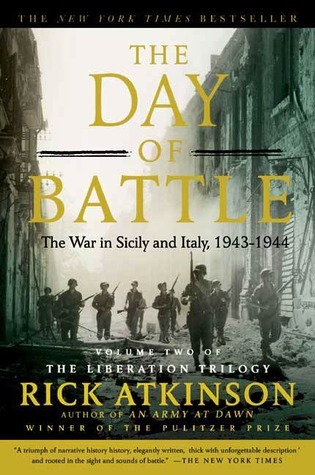More on this book
Community
Kindle Notes & Highlights
Read between
October 31, 2023 - January 21, 2024
German POW population in the United States, which eventually would reach 272,000.
the butcher’s bill had been paid in a bloodletting that ultimately would claim sixty million lives: one life every three seconds for six years.
The German submariner casualty rate during the war, 75 percent, would exceed that of every other service arm in every other nation.
American forces on this very day, May 11, were landing on Attu in the Aleutians, a far-corner fight that would obliterate the Japanese garrison of 2,500 at a cost of more than a thousand U.S. lives.
Forty-five months of war had stretched Britain as far as she would stretch. More than 12 percent of the British population now served in the armed forces; with national mobilization nearly complete, severe manpower shortages loomed if the war dragged on, particularly if it required storming the glacis of Festung Europa across the Channel. British battle deaths already exceeded 100,000, with thousands more missing, 20,000 merchant mariners lost, and another 45,000 dead in the United Kingdom from German air raids.
The green and feeble U.S. Army of just a few years earlier now exceeded 6 million, led by 1,000 generals, 7,000 colonels, and 343,000 lieutenants. The Army Air Forces since mid-1941 had grown 3,500 percent, the Army Corps of Engineers 4,000 percent. A Navy that counted eight aircraft carriers after Pearl Harbor would have fifty, large and small, by the end of 1943. More cargo vessels would be built this year in the United States—a Liberty ship now took just fifty days, from keel laying to launch—than existed in the entire British merchant fleet.
“Use it up, wear it out, make it do, or do without” became a consumer mantra. Plastic buttons replaced brass; zinc pennies supplanted copper. To save fifty million tons of wool annually, the government outlawed vests, cuffs, patch pockets, and wide lapels; hemlines rose, pleated skirts vanished, and an edict requiring a 10 percent reduction in the cloth used for women’s bathing suits led to the bikini.
Nationwide, the speed limit was thirty-five miles per hour, known as “victory speed.”
Jefferson’s manifesto, chiseled in marble, summarized perfectly the animating sentiment of the men who would begin meeting tomorrow in search of a path that could carry them to war’s end: “I have sworn upon the altar of God eternal hostility against every form of tyranny over the mind of man.”
The division’s return to Algeria after the Tunisian campaign had indeed left a “trail of looted wineshops and outraged mayors.” Some troops fired at Arab peasants from troop train boxcars “just to see them jump,” admitted a 26th Infantry soldier, who added, “Too much vino, too cocky, and too much steam to blow off…. We just plain didn’t give a damn for anyone or anything.”
Terry de la Mesa Allen.


